Pixel 6 Pro vs. OnePlus 9 Pro: Which phone is best?
Who wins in the battle of the Pixel 6 Pro vs. OnePlus 9 Pro?
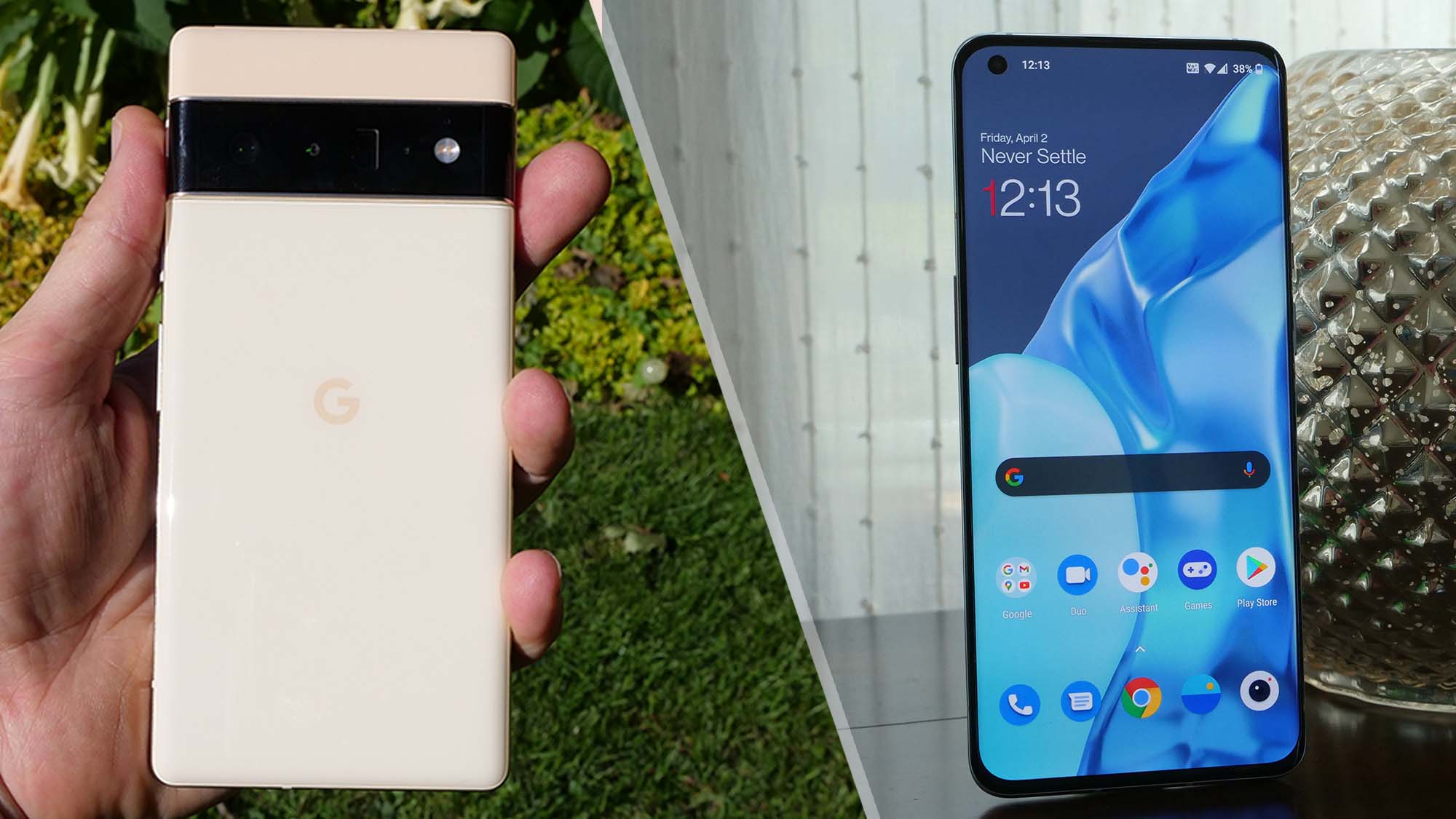
The Pixel 6 Pro is a return to the flagship phone market for Google, but at a much more affordable price point than most, making it a formidable foe for the OnePlus 9 Pro. Once known for its “flagship killer” phones, OnePlus has raised its specs and prices in recent years and is now undercut by Google’s latest Pixel.
While both phones come in at under the $1,000 mark, the OnePlus just barely ekes it out at $969 compared to the $899 starting price of the Pixel 6 Pro. Both phones feature similar specs with solid rear camera arrays, 6.7-inch adaptive 120Hz AMOLED screens, in-display fingerprint sensors and IP68 water and dust resistance.
While Google has dramatically improved its hardware this year, OnePlus has made notable improvements to its software update policies that have traditionally held it back, making this a much more even fight than we’ve seen in the past.
With both of these phones earning a spot among our best smartphones for 2021, there are no wrong answers here. However, each offers some clear advantages over the other, so read on to find out which is our overall winner and whether that phone is the right one for you.
- Best smartphones in 2021
- Best budget phones in 2021
- Best mobile phone deals in November 2021
Pixel 6 Pro vs. OnePlus 9 Pro: price and value
The base Pixel 6 Pro starts at $899 with a reasonable 128GB of storage and an impressive 12GB of RAM. You can upgrade to 256GB or 512GB of storage for $999 and $1,099, respectively.
The OnePlus 9 Pro starts slightly higher at $969 for the same 128GB of storage, but 8GB of RAM. There’s only one upgrade option for the OnePlus 9 Pro. For $1,069, you double your storage to 256GB and boost the RAM to 12GB.
If both phones launched at the same time this would be an easy win for the Pixel 6 Pro, but deals abound on the OnePlus 9 Pro after over half a year on the market. The base model is now hard to find, but the upgraded 256GB model is now typically available for $899 or less, which is an amazing price for this hardware.
Sign up to receive The Snapshot, a free special dispatch from Laptop Mag, in your inbox.
As this section is not just price, but also value, I’m going to call it a draw even factoring in this advantage for the OnePlus 9 Pro as Google offers much better software support, delivering OS updates faster and longer than OnePlus. If you are someone that always wants the latest and greatest new features from Google or you hang on to your phone for more than a couple of years then this could definitely tip the scales for you.
Winner: Draw

Pixel 6 Pro vs. OnePlus 9 Pro: design
The Google Pixel 6 Pro design has its fans and its detractors. I fall into the former camp as not only is it unique, but it’s incredibly comfortable to hold and use. The full-width camera array on the back may make it look like a prop from Star Trek, but the cameras it houses are worth it and it has the added benefit of sitting evenly on a desk which is a rare feat in phone design these days.
The OnePlus 9 Pro design, by comparison, fails to stand out in any meaningful way from flagships of the last few years. The curved glass back, curved display and rounded edges make it pleasant enough to hold, although I find it a bit slippery. The Pine Green finish offers a little more personality than the Morning Mist of my review unit, but overall it’s a disappointing design from OnePlus.

Aesthetics are pretty subjective though, so let’s take a look at the hard numbers for the Pixel 6 Pro and the OnePlus 9 Pro. Both phones offer IP68 dust and water resistance, but the Pixel 6 Pro has the edge on durability with its superior Gorilla Glass Victus screen protection compared to Gorilla Glass 5 on the OnePlus 9 Pro.
With 6.7-inch displays, it’s a safe bet that with or without a case these phones aren’t fitting conveniently in your pocket and they have virtually identical dimensions with one exception. At 6.43 x 2.9 x 0.34 inches the OnePlus 9 Pro is notably narrower than the Pixel 6 Pro at 6.45 x 3 x 0.35 inches. For most people, these phones are too big to easily use one-handed anyway, but this makes it a bit more likely with the OnePlus 9 Pro. The Pixel 6 Pro is also slightly heavier at 7.41 ounces to 6.95 ounces, but it’s not a meaningful difference in use.
I’m awarding this to the Pixel 6 Pro for its distinct design and more robust display. The narrower display is the one design feature the OnePlus 9 Pro has going for it, but it won’t be a selling point for everyone.
Winner: Pixel 6 Pro
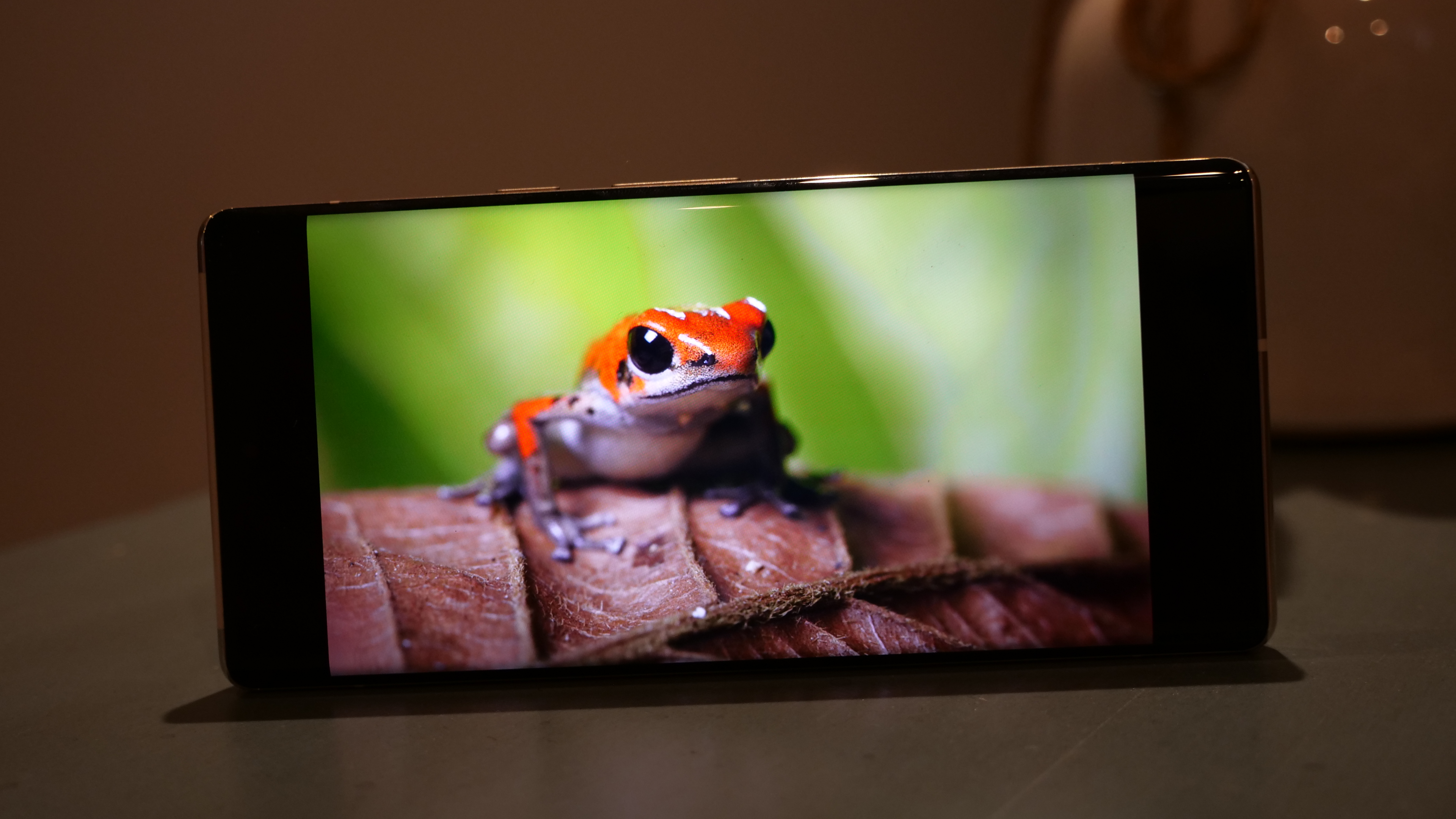
Pixel 6 Pro vs. OnePlus 9 Pro: display
If you look at the specs sheet for these two phones, you would be hard-pressed to tell the displays apart. The Pixel 6 Pro features a 6.7-inch, QHD+ (3120x1440 pixel) LTPO OLED display with Google’s Smooth Display adaptive 120Hz refresh rate. The OnePlus 9 Pro uses a 6.7-inch, QHD+ (3216x1440 pixel) LTPO AMOLED screen with an adaptive 120Hz refresh rate.
With its narrower display and slightly higher resolution, the OnePlus 9 Pro offers a sharper display, but at 526 pixels per inch compared to 512, it’s not a difference you’ll notice unless you hold the phone inches from your eye. (P.S. Don’t do that.)
The OnePlus 9 Pro also offers a slightly wider range with its adaptive display tech, dropping all the way down to 1Hz if you are viewing truly static content like a photo. The Pixel 6 Pro can only drop to 10Hz by comparison, again not a significant difference, but a point for OnePlus. The 120Hz refresh rate at the high-end is more important giving you buttery smooth animations throughout the operating system and in supported apps and games.
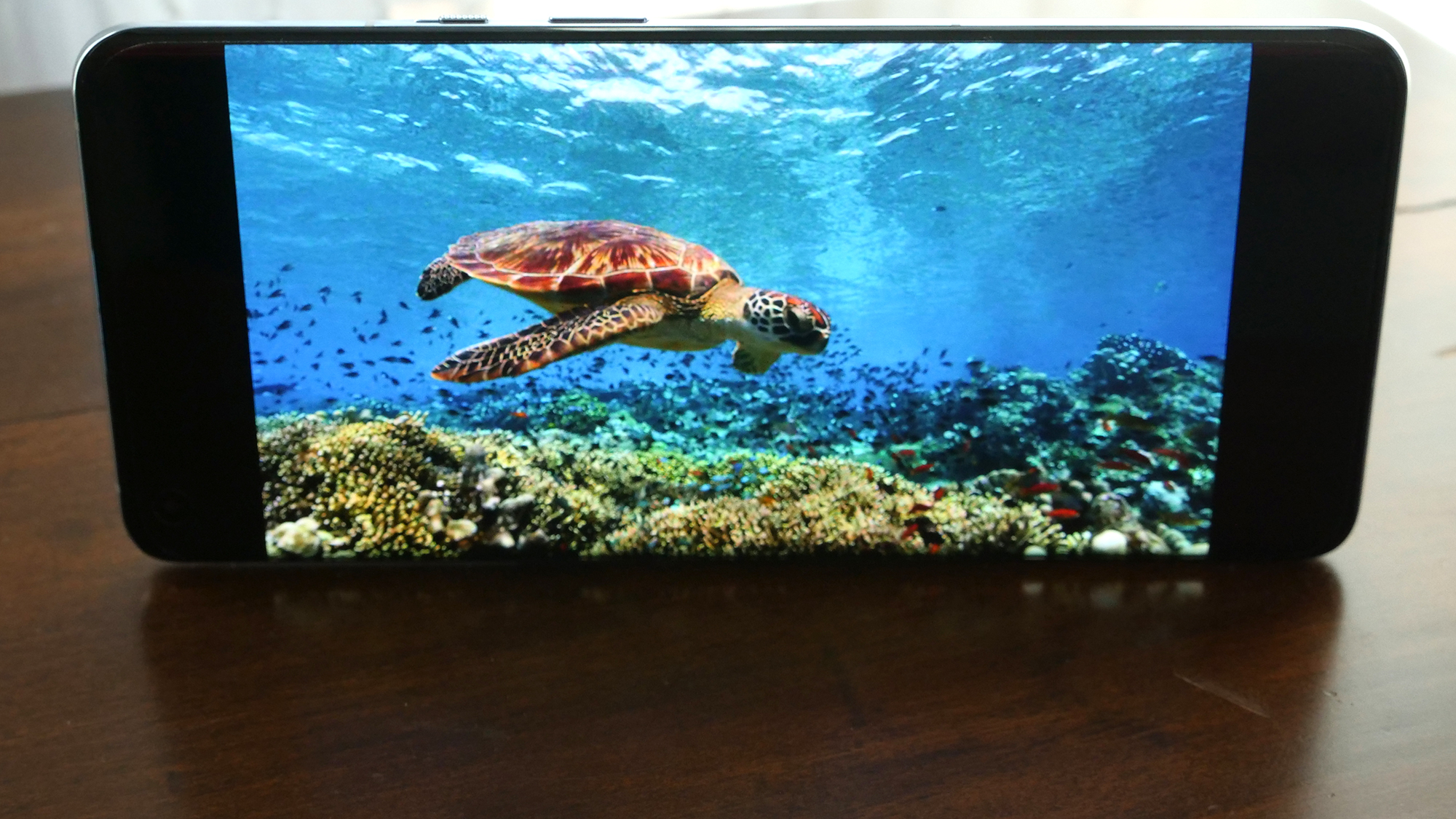
I’ve spent weeks with both of these phones as my primary device now and I can say that these are easily two of the finest displays among the many phones that I reviewed this year. For my side-by-side comparison, I turned to Life in Color with David Attenborough as that show does such an excellent job of testing the limits of HDR support. While the Pixel 6 Pro produces a slightly brighter image at its max setting, the difference between the two when it comes to color accuracy and vibrancy is negligible to my eye. A poison dart frog on a dried leaf shows the range and sharpness of each display with the orange-red of the frog popping against the bokeh of the green background while retaining the fine details in the veins of the leaf below it.
Our colorimeter results show that the OnePlus 9 Pro actually has a bit of an edge. The OnePlus 9 Pro covers 84.9% of the DCI-P3 color gamut in its Natural color setting, which puts it reasonably ahead of the 74% that the Pixel 6 Pro managed. If you prefer a more colorful image though the vibrant setting on both nearly doubles that result with the OnePlus 9 Pro managing 147.4%.
Brightness tips back in favor of the Pixel 6 Pro; it managed the highest result that we’ve seen on an Android phone with 842 nits, easily beating the 722 nits max for the OnePlus 9 Pro. There is a perceptible difference, but rest assured the OnePlus 9 Pro is still plenty bright to view even in direct sunlight.
Overall, while it is close, this category tips in favor of the OnePlus 9 Pro. It’s less of a blowout win and a death by a thousand cuts with its multiple small advantages adding up to a superior display.
Winner: OnePlus 9 Pro
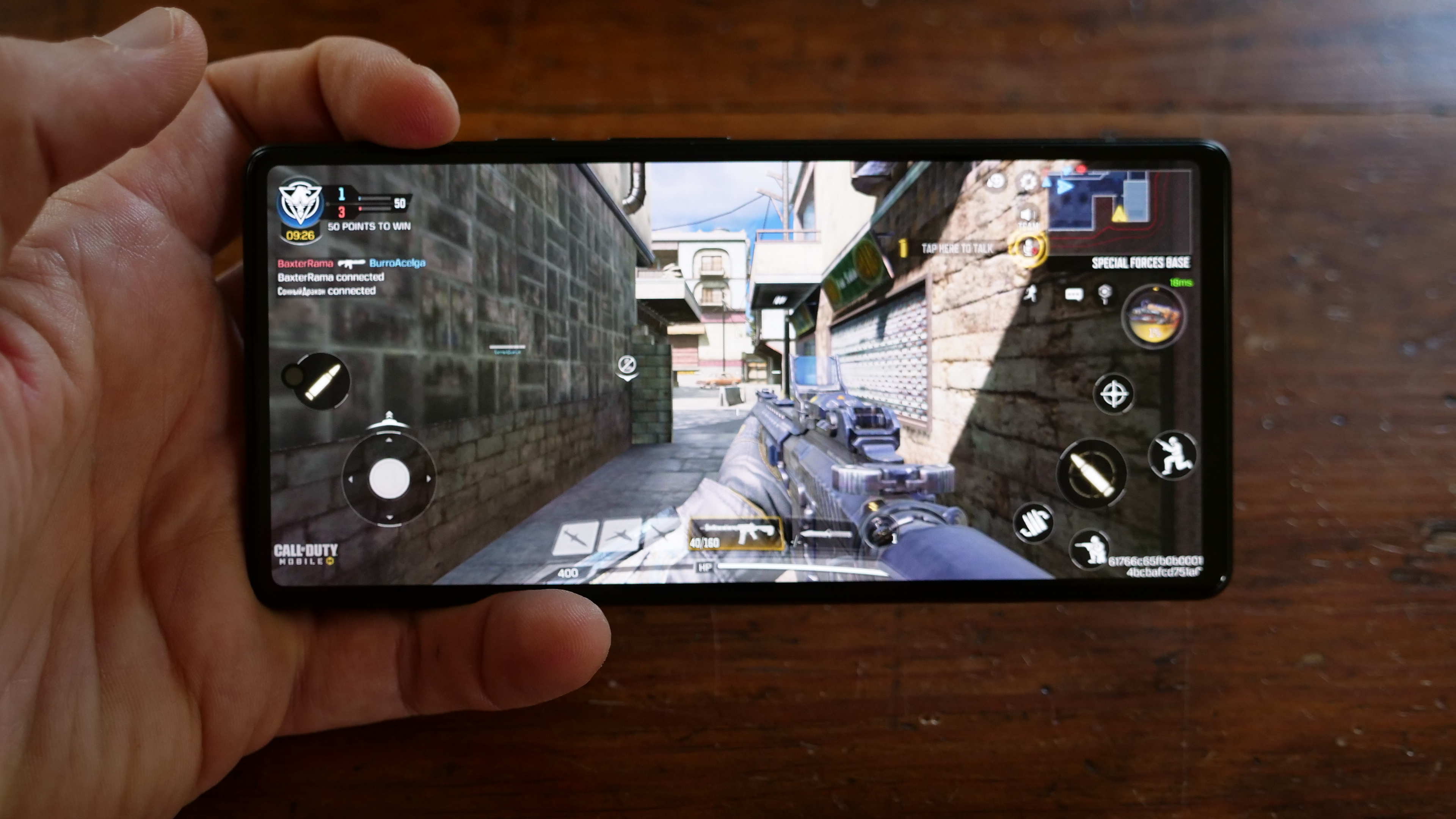
Pixel 6 Pro vs. OnePlus 9 Pro: performance
With the introduction of Google’s custom Tensor chip, this has become a much more interesting fight than the typical Snapdragon CPU vs. Snapdragon CPU that we get in the Android flagship market. This is all the more true because Google has made some very different choices with its chipset that make an apples-to-apples comparison difficult.
Let’s kick off with real-world usage as for most people this is all you are going to actually care about. I’ve loaded dozens of Google Chrome tabs, apps, picture-in-picture videos, and games, on both phones over my time with them and neither has shown any signs of slowing down. This includes intensive games like Call of Duty Mobile on its high settings and challenging apps like Filmic Pro for mobile video editing.
Benchmark testing made things a little messier. In the Geekbench 5 overall performance test, the Pixel 6 Pro managed a score of 2,760. That’s not even close to the 3,685 that the OnePlus 9 Pro delivered, the highest score for a traditional Android phone. We’ve only had a couple of months with the Tensor chip, so we’ll need to see if over time this difference starts to become noticeable, but it’s possible the Pixel 6 Pro is just making up for it in other ways.
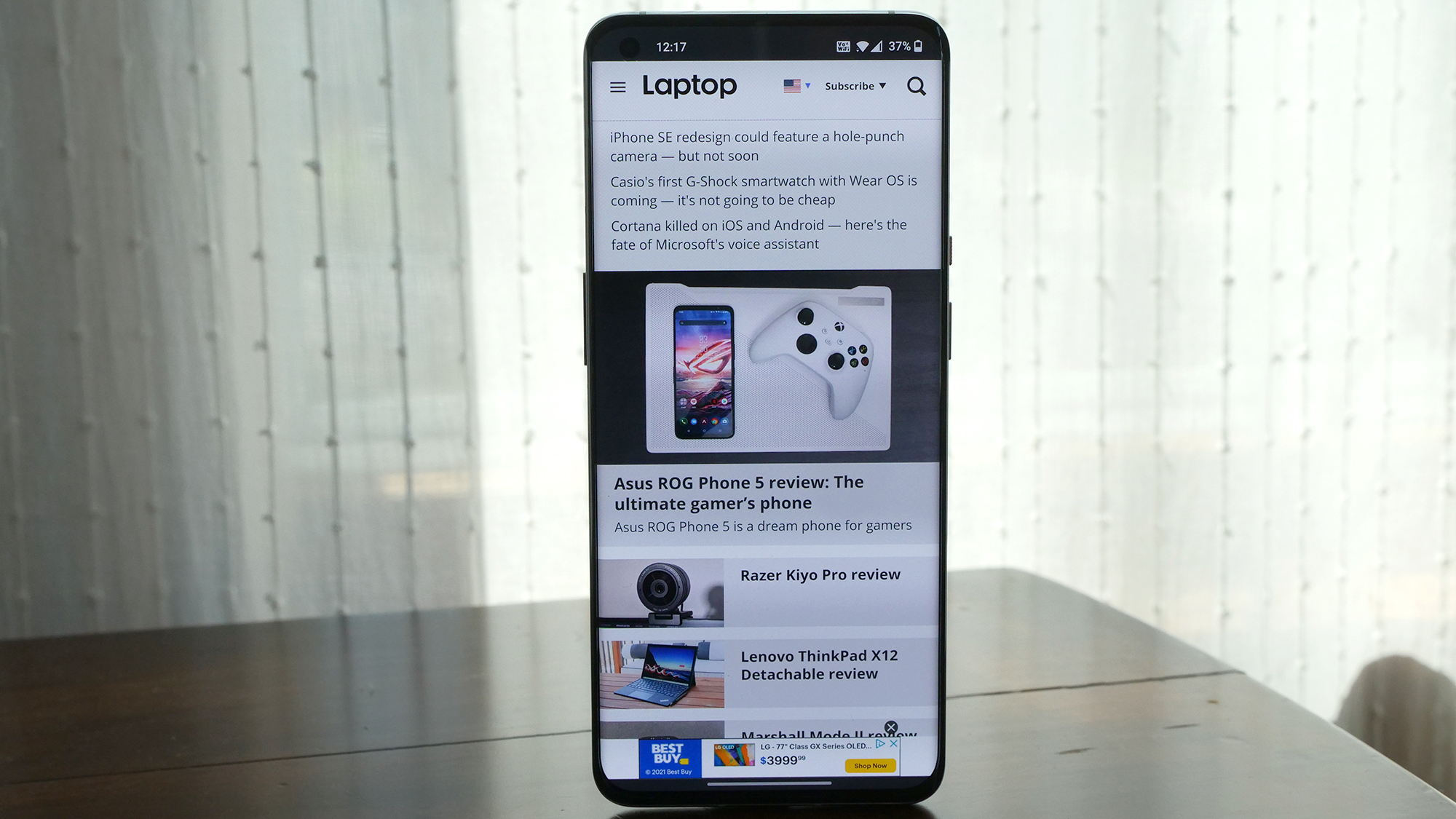
Our graphics-focused testing was a different story, with the Pixel 6 Pro delivering 40 frames per second, which manages to outclass the Galaxy S21 Ultra (34 fps). We are still in the early days with Google’s Tensor chip, but it seems that Google leaned into gaming and graphics performance more than we would have anticipated, which carries over to other tasks.
The Adobe Premiere Rush video editing test showed this off again with the Pixel 6 Pro finishing rendering and exporting a 4K video to 1080p in 48 seconds. That’s about 24% faster than the Galaxy S21 Ultra’s 1 minute and 3-second finish.
Neither phone will present any issues for users in terms of churning through typical daily tasks or virtually any Android app that you can throw at them today, and ultimately, this is too close to call. The biggest argument favoring the Snapdragon 888 is Qualcomm’s proven track record versus the new Tensor chip.
Winner: Draw
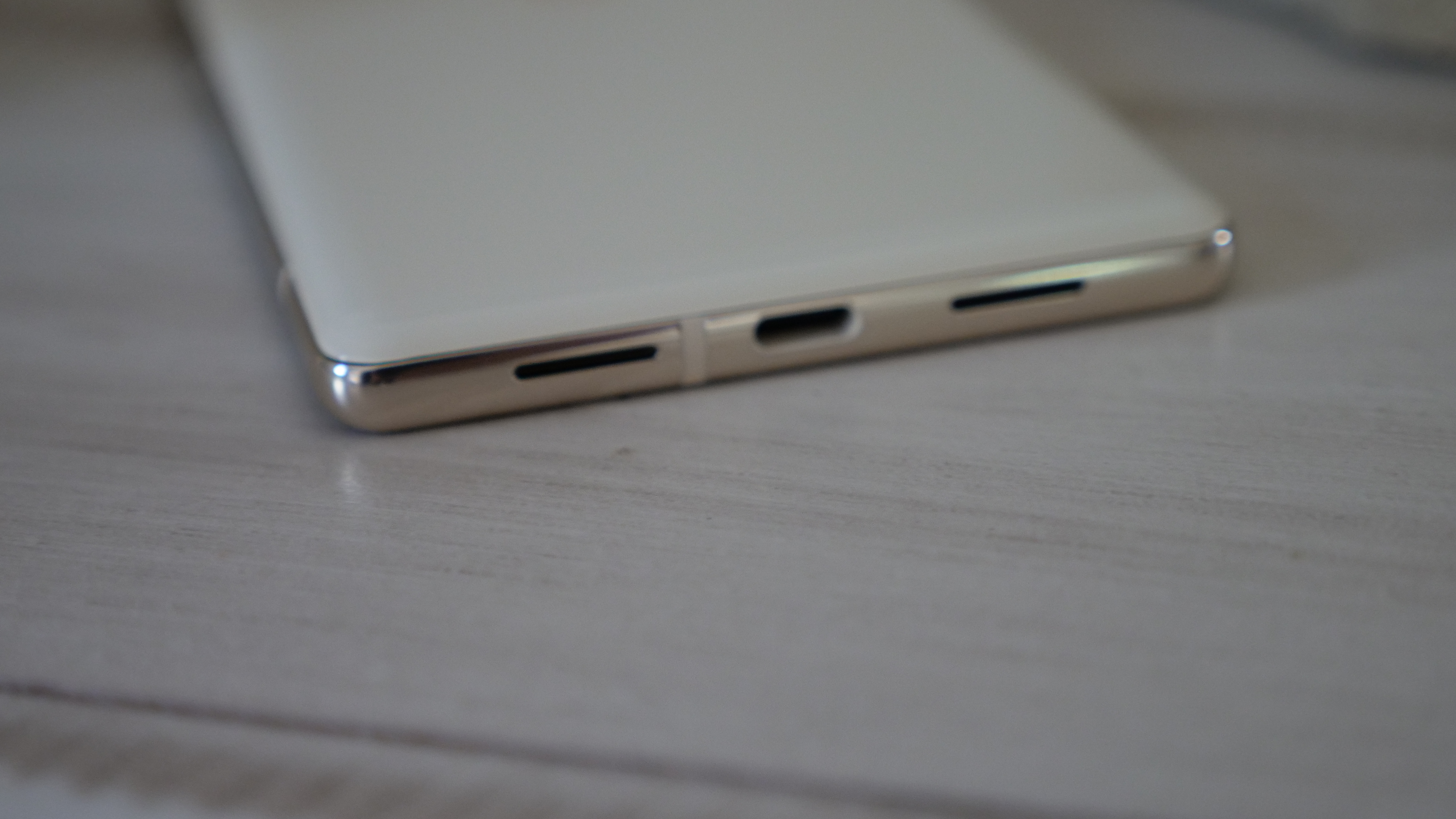
Pixel 6 Pro vs. OnePlus 9 Pro: battery life and charging
Battery life is and charging is another matter entirely, the TL;DR for this section is that the OnePlus 9 Pro wins in every regard, but read on for the full details.
Now while some have had issues with the Pixel 6 Pro battery life, my experience has been solid with no problem making it through a full day on a charge. The OnePlus 9 Pro is much less controversial with excellent results in my own testing and consistent similar results from other reviewers as well.
Our own Laptop Mag Battery test is one that came down quite hard on Google’s flagship. The Pixel 6 Pro lasted only 7 hours and 43 minutes on our test which involves consistently surfing the web over 5G while the display is set at 150 nits of brightness. The OnePlus 9 Pro managed 11 hours and 44 minutes in that same test. While this doesn’t align with what I saw in my real-world usage, it’s impossible to ignore that significant of a difference in this testing. I’d also note that while the discrepancy is nowhere near this great for me, the OnePlus 9 Pro did generally outlast the Pixel 6 Pro.
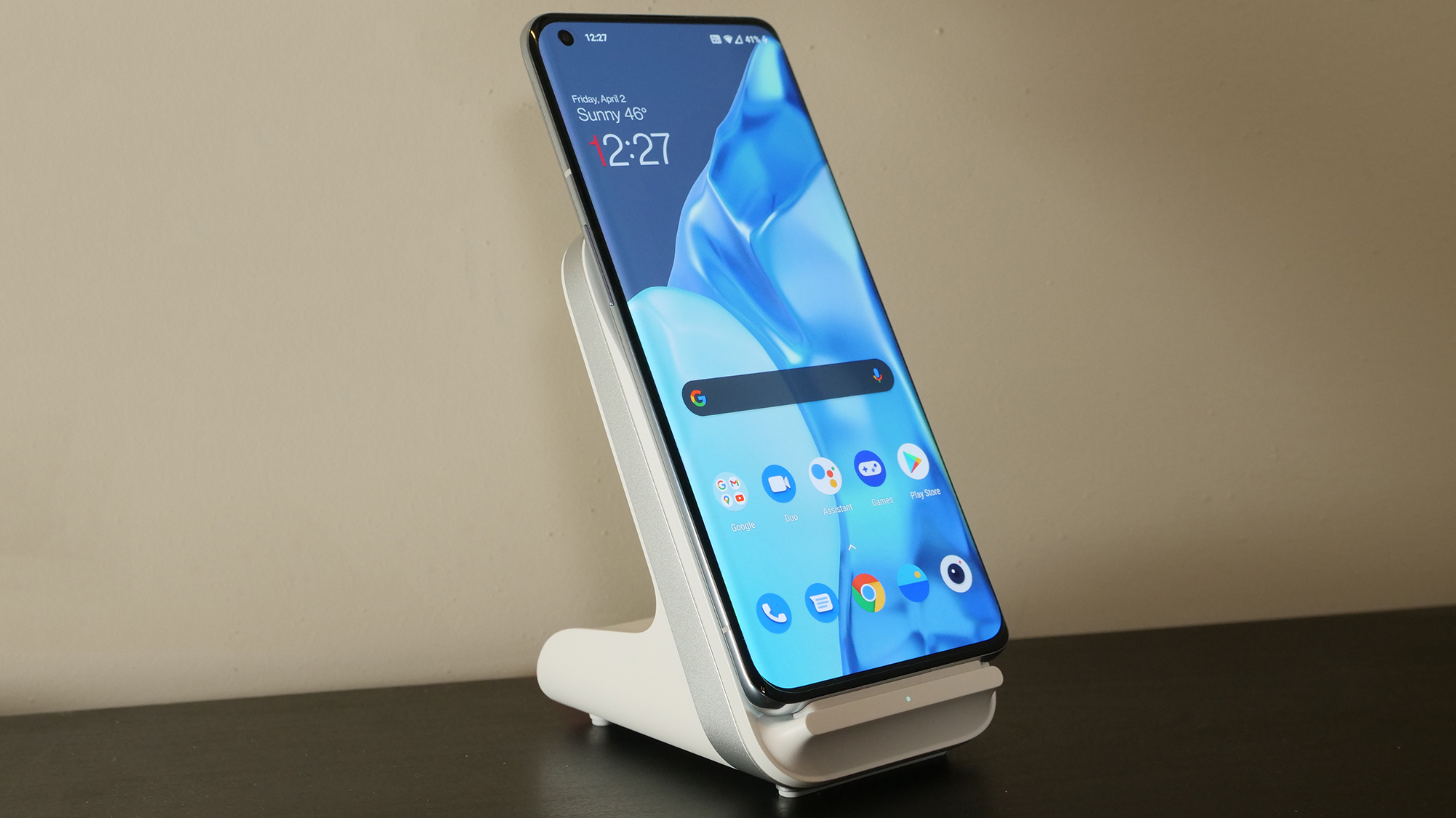
Charging is much more cut and dry. The OnePlus 9 Pro offers 65W wired charging via the WarpCharger that is included in the box with the phone. The Pixel 6 Pro doesn’t come with a charger and only supports 23W fast charging. This of course results in comically different charging speed test results with the OnePlus 9 Pro able to fully charge in 30 minutes while the PIxel 6 Pro will get to roughly 50% in that time.
Support for wireless Qi charging is also present on both phones, but again OnePlus has the advantage with 50W fast wireless charging to 23W from Google. Both require their proprietary wireless charging docks for the fastest speeds.
While I don’t believe the battery life should be a significant tipping point for choosing either of these phones, the charging is an absolute game-changer from OnePlus. Even just 10 minutes plugged in is enough for about a 50% charge and it essentially removes any battery life concerns as you are never more than a few minutes away from topping up for hours of additional usage.
Winner: OnePlus 9 Pro

Pixel 6 Pro vs. OnePlus 9 Pro: cameras
Both of these phones took a significant step forward with their cameras in 2021. For Google, it was a long-overdue hardware upgrade and with OnePlus a much-needed software update powered by its partnership with Hasselblad.
The Pixel 6 Pro features a wide-angle primary 50MP Octa PD Quad Bayer sensor with an f/1.85 aperture and a 1.2µm pixel width. That new sensor is 1/1.31”, one of the largest currently available in a phone. The 12MP ultra-wide is improved with a larger 1.25µm pixel width, f/2.2 aperture, and a wider 114-degree field of view. The new telephoto is almost as significant an update as the primary with a 48MP resolution and a 4x optical zoom that can deliver usable results even at its full 20x digital zoom. Google went from a camera array that you would expect to find on a sub-$500 budget phone to one of the strongest on the market.
The OnePlus 9 Pro is no slouch though, it offers a 48MP Sony IMX789 sensor for its main wide-angle lens at f/1.8, a 50MP Sony IMX766 ultra-wide sensor at f/2.2, an 8MP 3.3x telephoto at f/2.4, and the 2MP monochrome camera. That last one isn’t really a standalone sensor, but helps deliver additional data to the other sensors. As I mentioned already, though the bigger news for the OnePlus camera this year was its tuning by Hasselblad.
Again, while it’s a solid set of sensors from OnePlus, this is the first time in a long time that I can say that the Pixel offers clearly superior camera hardware. The ultra-wide is the one notable exception, but the primary and telephoto lenses from Google are dramatically better than what you get from OnePlus.
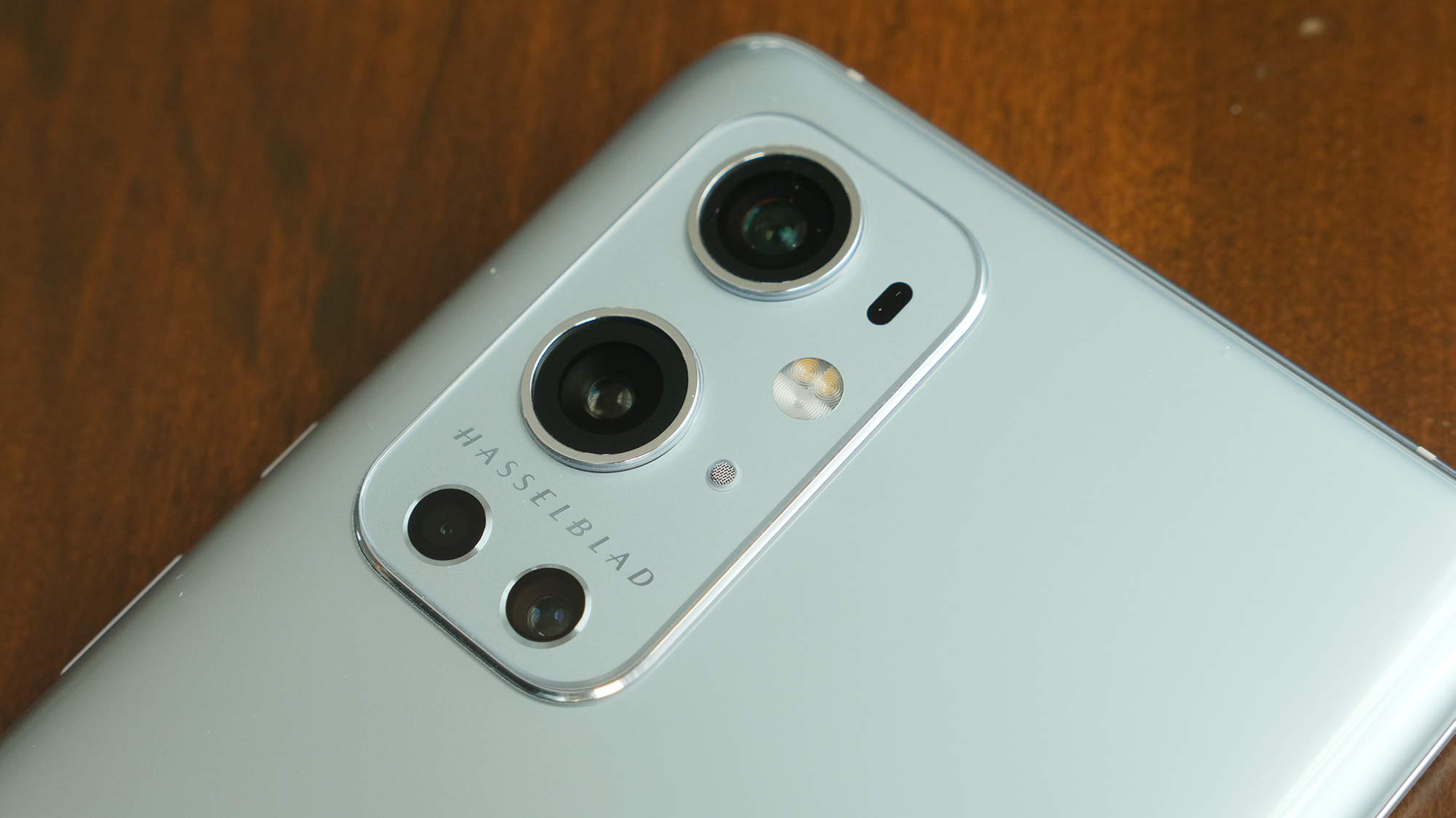
Again, while it’s a solid set of sensors from OnePlus, this is the first time in a long time that I can say that the Pixel offers clearly superior camera hardware. The ultra-wide is the one notable exception, but the primary and telephoto lenses from Google are dramatically better than what you get from OnePlus.
That is mostly borne out by the photos that I’ve taken with each phone. Here’s a collection of shots from the Pixel 6 Pro primary wide-angle lens. They are consistently sharp and retain that pleasant color pop that is often associated with the Pixels. Whether that’s the splotch of red contrasting with the white feathers of our chickens or the stark white of the clouds against the brilliant blue of the sky, the shots from the Pixel 6 Pro’s primary sensor are outstanding.

Pixel 6 Pro wide-angle camera
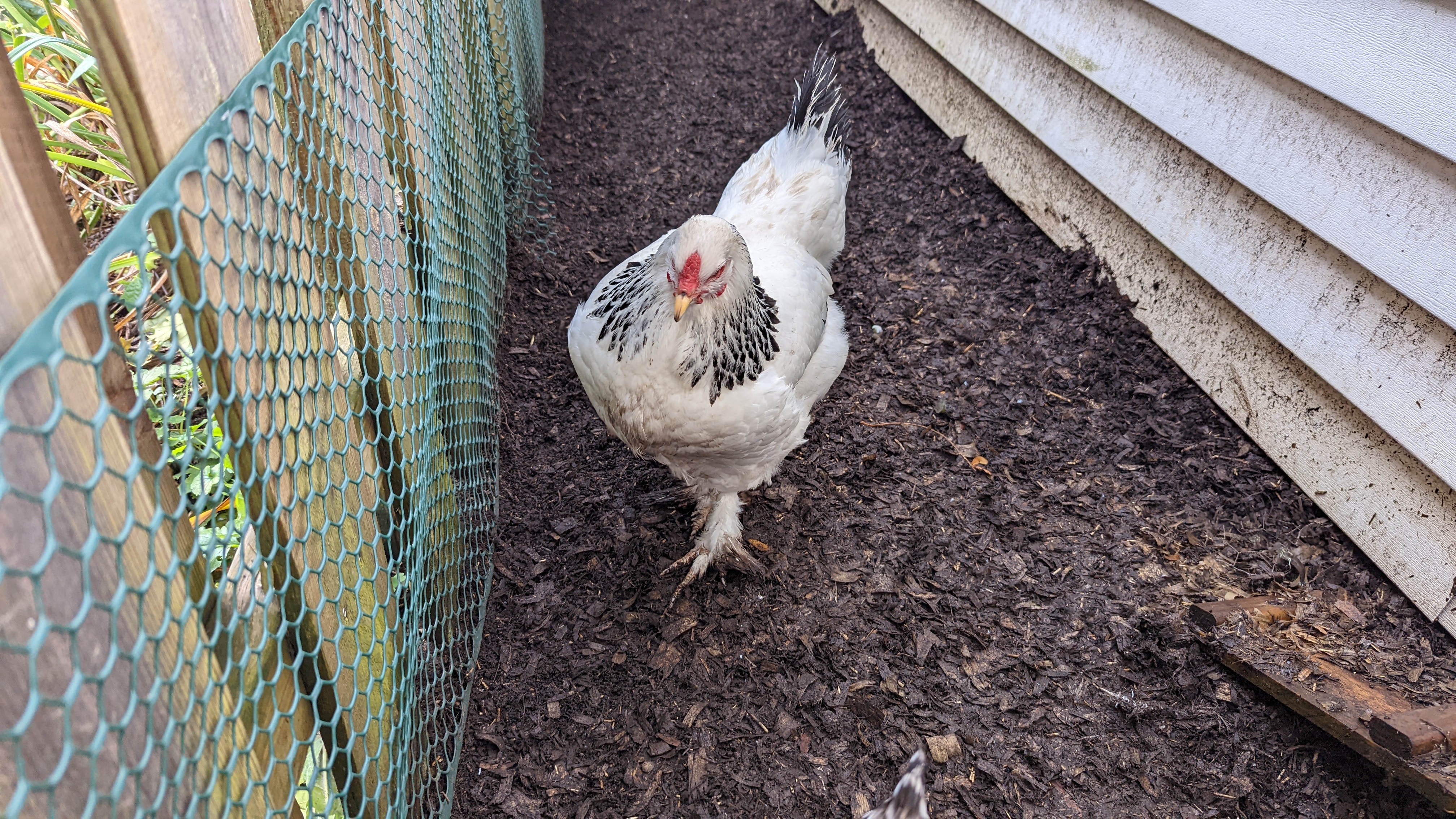
Pixel 6 Pro wide-angle camera

Pixel 6 Pro wide-angle camera

Pixel 6 Pro wide-angle camera

Pixel 6 Pro wide-angle camera - night mode

Pixel 6 Pro wide-angle camera
In daylight, the primary sensor for the OnePlus 9 Pro holds up pretty well against the Pixel 6 Pro. The color science is the most significant stride that OnePlus took this year and I think it looks very close to the results from the Pixel. The Pixel shots are a bit crisper to my eye, but it’s not a night and day difference. But that brings me to where you will see a difference and that is in more challenging lighting. Night shots or low-light in general dramatically favor the Pixel both due to Google’s superior night mode and that new larger sensor.

OnePlus 9 Pro wide-angle camera

OnePlus 9 Pro wide-angle camera

OnePlus 9 Pro wide-angle camera

OnePlus 9 Pro wide-angle camera

OnePlus 9 Pro wide-angle camera

OnePlus 9 Pro wide-angle camera - night mode
Ultra-wide photos are a different story entirely. OnePlus not only has superior hardware here but also paid particular attention to fixing the distortion that you often see with ultra-wide photos. Again, the color from both phones is excellent, but looking at these samples you’ll notice in the mural shot at the edges it bows in slightly and you don’t get that with the OnePlus 9 Pro. It’s a common problem and depending on how much you take ultra-wide photos may not matter to you at all, but the OnePlus has the edge.

OnePlus 9 Pro ultra-wide camera sample

Pixel 6 Pro ultra-wide camera
Telephoto tips back in favor of Google. With a steady hand, you can pull off a usable 10-12x zoom shot on the Pixel 6 Pro, and on a tripod or by bracing your hand against something you can manage a usable 20x zoom. The OnePlus 9 Pro doesn’t come close with its 8MP 3.3x zoom. I said in my review of that phone that you are better off using the main sensor and then cropping and zooming. That pains me to say as I’m a big proponent of telephoto lenses on phones, but the OnePlus 9 Pro just comes up short.

Pixel 6 Pro 20x zoom - handheld

OnePlus 9 Pro 4x zoom - handheld
Selfies are also a win for the Pixel 6 Pro, but this is much more of a software victory than hardware. While the iPhone remains the undisputed selfie champ, Google gets as close as anyone has to unseating it, particularly for portrait mode selfies. The OnePlus 9 Pro is somewhat guilty of over smoothing and also just misses a bit too often with its simulated bokeh.

Pixel 6 Pro front-facing camera - portrait mode

OnePlus 9 Pro front-facing camera - portrait mode
While I want to be clear that the OnePlus 9 Pro does deliver excellent photos, this is a relatively easy win for the Pixel 6 Pro as it stacked the deck in its favor this year with its massive hardware advancements. Google is still at the top of its game when it comes to computational photography and now armed with top-of-the-line hardware it’s tough to beat.
Winner: Pixel 6 Pro

Pixel 6 Pro vs. OnePlus 9 Pro: software
At launch, the OnePlus 9 Pro was only promised two major OS updates which would have made this section an easy win for the Pixel 6 Pro. But following the OnePlus merger with Oppo the company dramatically improved its update policy to three years of OS updates and four years of security updates. This nearly matches the Pixel 6 Pro’s three years of major OS updates and five years of security updates.
Where the Pixel 6 Pro still has the advantage on updates is speed, the Pixels are always the first devices to receive any major Android update both in beta and full rollout. OnePlus by comparison does often get in early on the beta releases, but it takes considerably longer for the public releases.
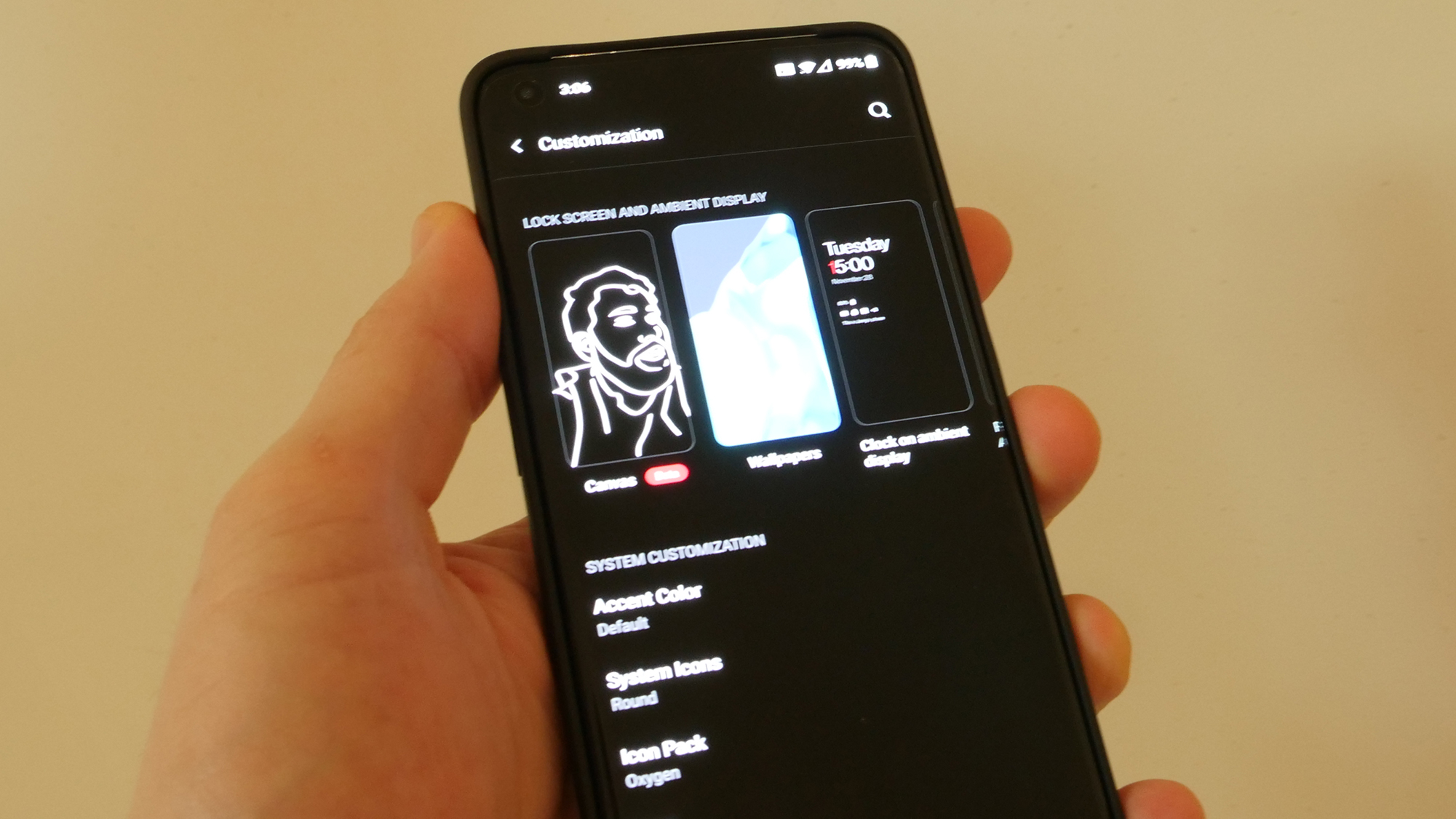
Both phones are running Android 12, which brought with it a dramatic visual refresh, including the new notification panel, privacy updates and some other handy additions like universal search. The Pixel gets some nice extras like Hold for Me, which will tell you when a real person comes back on an automated call and dramatically improved dictation that is assisted by the new Tensor chip. Camera features like Magic Eraser and Real Tone are potential game-changers as well.
The OnePlus 9 Pro technically runs OxygenOS 12, which is its skinned version of Android 12. Beyond some visual differences, it also added a handful of additional features. This includes the “Work Life Balance 2.0” feature that helps eliminate work distractions when you aren’t meant to be working, the same powerful new Search bar from Android 12, an enhanced dark mode, improved Tool Box 2.0 with stats and settings for gaming and an improved photo gallery.
While it is far closer than it once was, the win here still goes to the Pixel 6 Pro. Google’s faster updates and longer security update promise would be enough, but the Pixel also gets a handful of truly useful extras that make the Pixel version of Android a more pleasant user experience than OxygenOS.
Winner: Pixel 6 Pro
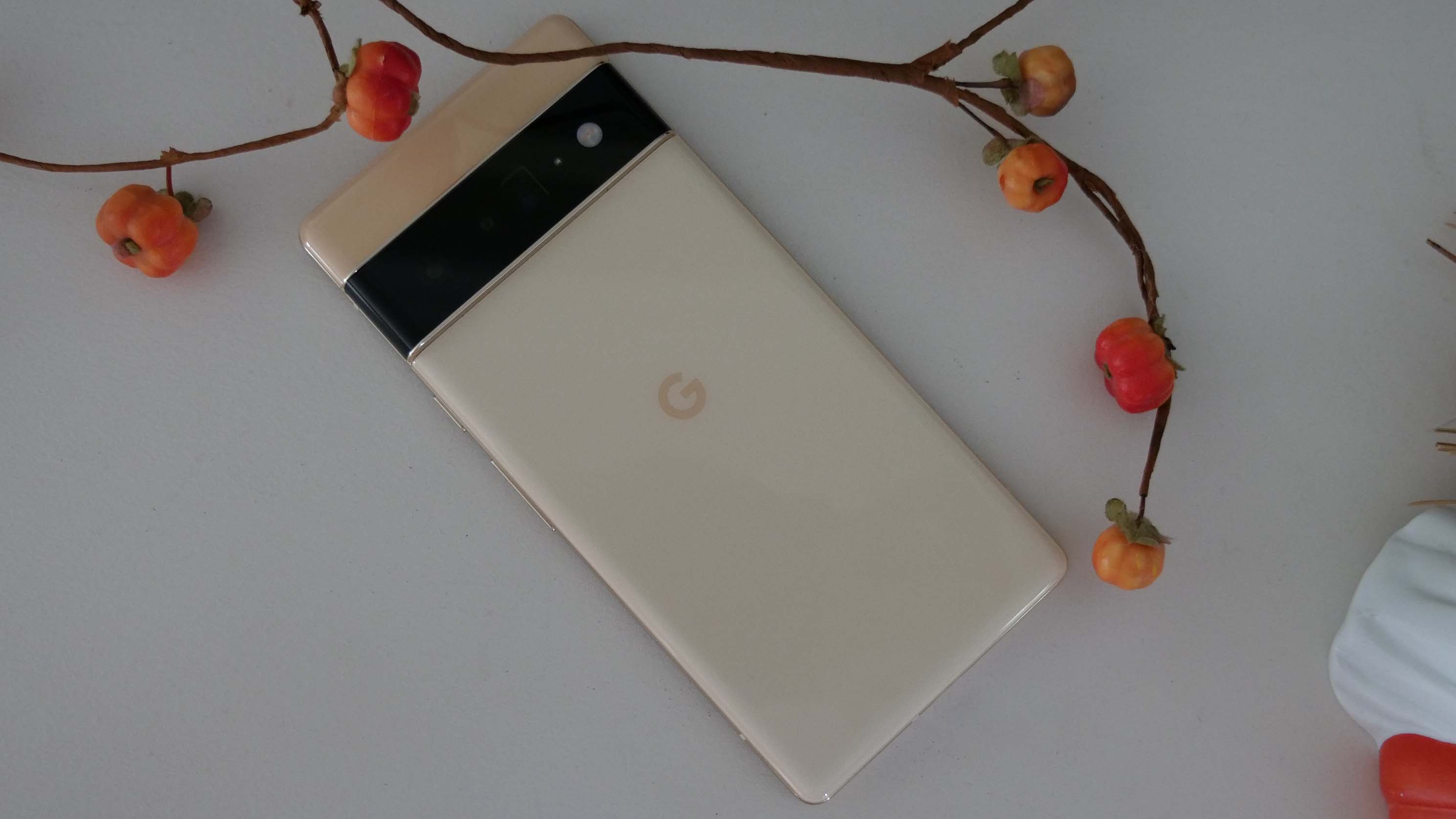
Overall winner: Pixel 6 Pro
Tabulating all of the results, the Pixel 6 Pro is the better smartphone for most people. As I said at the outset, both of these phones are remarkable and among the best smartphones released this year, but taken as a whole the Pixel 6 Pro has a bit more to offer.
The combination of arguably the best photos from any smartphone on the market, the powerful new Tensor chip, the unmatched software support and refreshing new design all carry the Pixel 6 Pro to the top of the podium this time.
The OnePlus 9 Pro put up a good fight. Its excellent battery life, untouchable fast charging, revised software update plan, gorgeous display and now often discounted price may make it the more compelling option for some users. If you aren’t into mobile photography or are a power user that often burns through your battery in a day it may be the better choice.
Sean Riley has been covering tech professionally for over a decade now. Most of that time was as a freelancer covering varied topics including phones, wearables, tablets, smart home devices, laptops, AR, VR, mobile payments, fintech, and more. Sean is the resident mobile expert at Laptop Mag, specializing in phones and wearables, you'll find plenty of news, reviews, how-to, and opinion pieces on these subjects from him here. But Laptop Mag has also proven a perfect fit for that broad range of interests with reviews and news on the latest laptops, VR games, and computer accessories along with coverage on everything from NFTs to cybersecurity and more.

